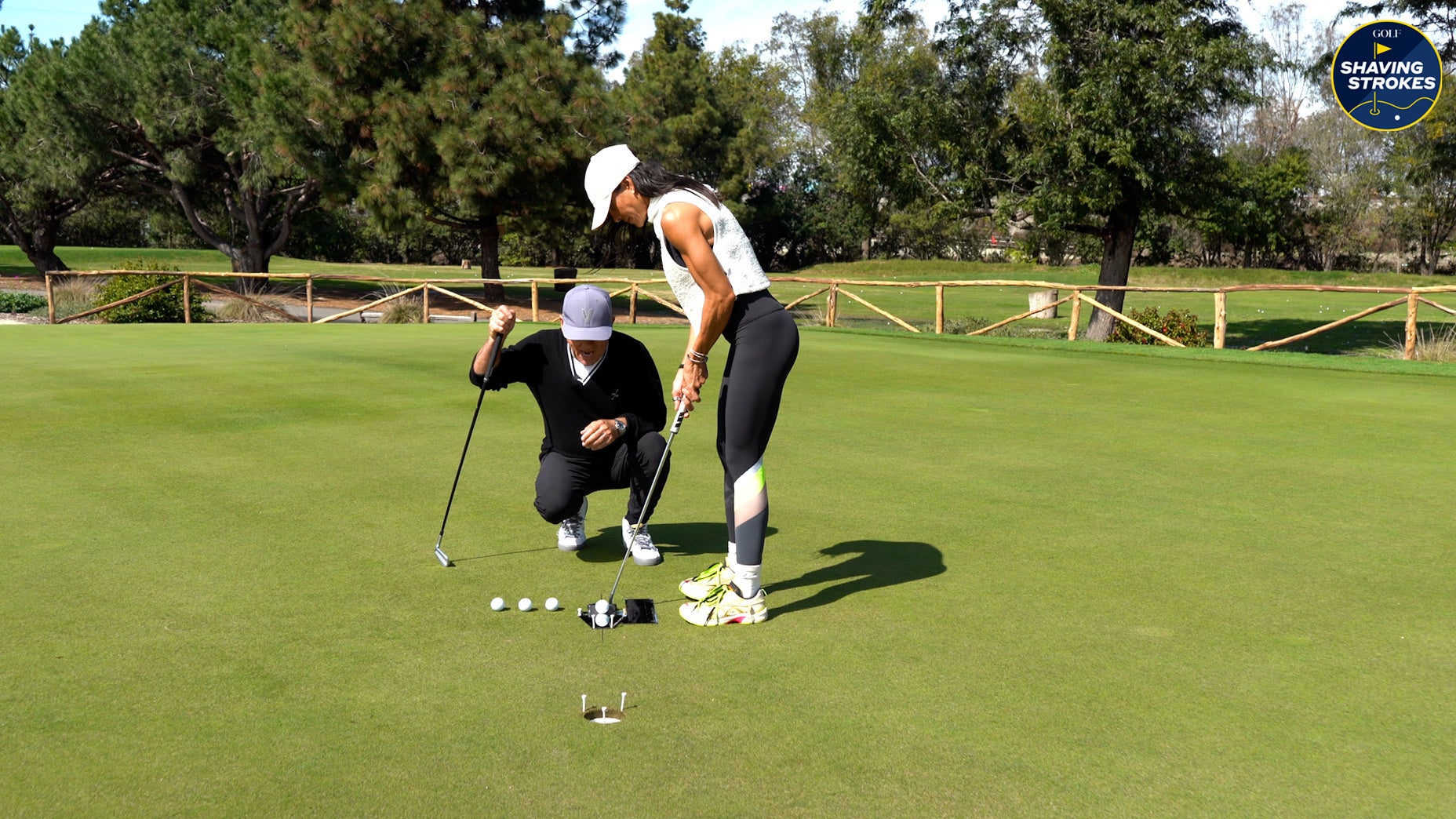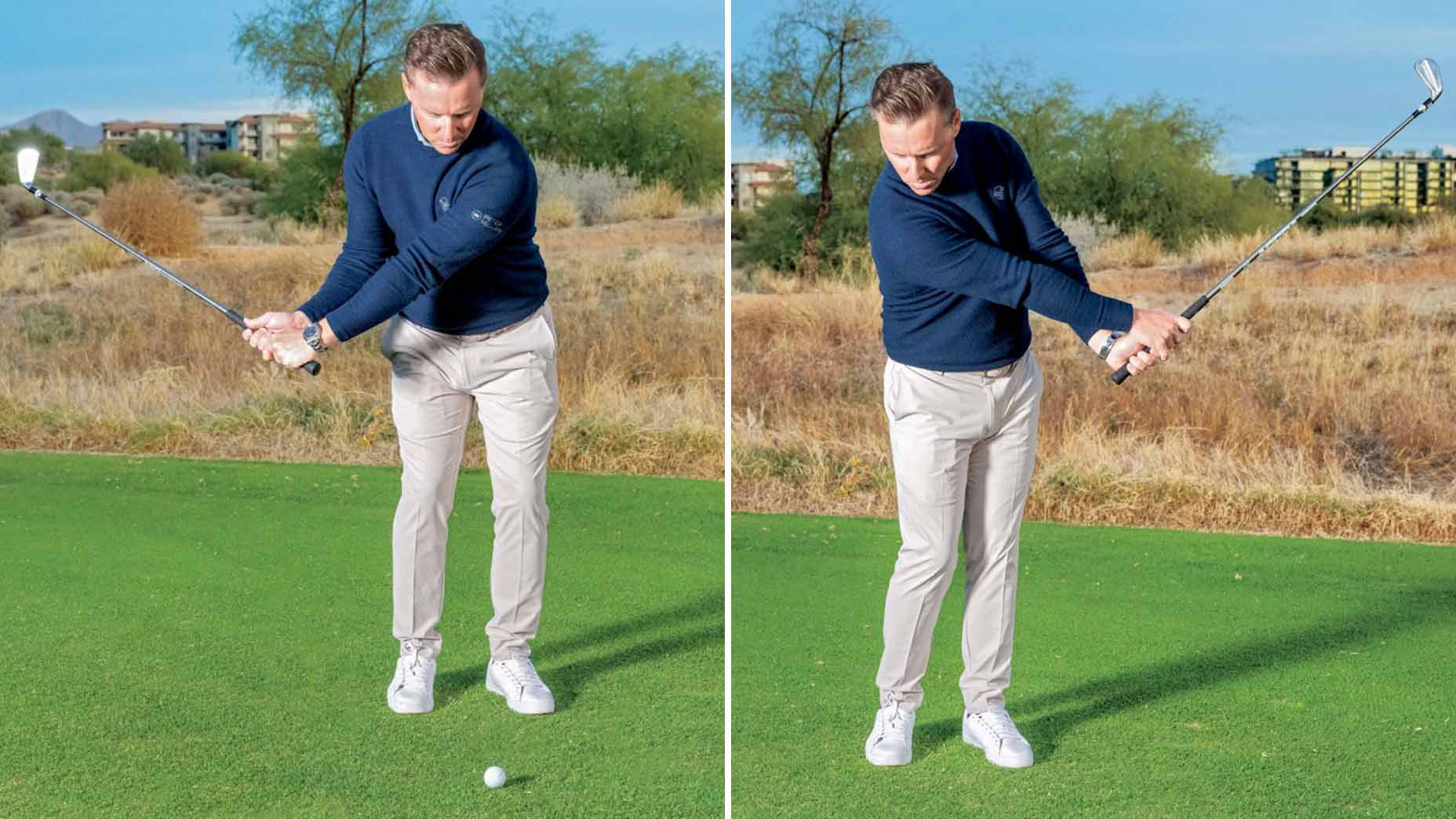How a pre-shot routine unlocked this teen’s true ball-striking ability

To help regain his confidence, this 4-time junior champ needed to rework his pre-shot routine.
Images via John Hughes
Welcome to Shaving Strokes, a GOLF.com series in which we’re sharing improvements, learnings and takeaways from amateur golfers just like you — including some of the speed bumps and challenges they faced along the way.
The next time you’re on the golf course, pay close attention to the pre-shot routines of your playing partners to see what you might be able to identify.
Are they waggling? Are they focused on aim and alignment? Are they taking practice swings or not? Do they even have a routine before addressing the ball?
If the answer is no to that last question, you might want to remind them of the importance of a pre-shot routine.
Most amateurs just assume their routine helps get them loose. But many don’t understand how using the same process each time allows them to relax, often leading to better results. By simply trusting the exact same process before taking each swing, you’ll build confidence and learn to accept any outcome.
In today’s Shaving Strokes lesson, golf instructor John Hughes shares how he helped a teenage golfer dial in his pre-shot routine — which made all the difference in his game. So take a look below to see how 4 easy pre-shot adjustments led this teen to the best version of himself on the course.
How a reworked pre-shot routine led to better ball-striking
I’ve been working with a teenager named Elisey for almost three years now; he lives in Turkey but has aspirations to play collegiately in the U.S. He’s always had solid fundamentals — he’s a four-time defending junior champion in his native country and has won events all over the world.
So, what helps separate Elisey from his competition? The effort he puts into controlling what he can before he swings the club.
Instead of trying to fix his swing in the middle of a round, Elisey dials in his pre-shot routine before each shot, which allows him to focus and play his best. Here are some of the skills we’ve worked on together to get him to this point.
1. Clubface control

Most golfers use a setup that closes the clubface toward their target. Why? Because intuition often tells them that this will correct their swing issues, which is often a slice. Sorry, but it doesn’t work that way. Your eyes and brain recognize that the club is closed before swinging, so they’ll adjust for the closure somewhere in your swing — only making your slice worse.
This is where you need to understand clubface control, using the leading edge to correctly set up.
In Elisey’s case, he uses the leading edge correctly, but one of his swing tendencies is to slightly close the face as he “triggers” the beginning of his golf swing. If this happens, it can sometimes result in a dramatic right-to-left curve to his shot. To better control the face of the golf club at impact, Elisey adjusts by starting with the club about 1-2 degrees open at address. This offsets his trend, and allows him to hit any shaped shot on command.
2. Leverage

You can’t hit the ball far if you can’t create the strongest lever possible at impact. Whether you’re a world-class athlete or a beginner golfer, leverage is what propels the ball — and it all starts from the ground up.
Most amateurs tend to use more upper body than lower body when making a swing, forgetting about how strong their legs are and how they can contribute to creating more leverage at impact.
Elisey learned at an early age how to use his legs in the swing, but he sometimes opens too early and pushes his shots to the right. We work on this before he swings the club by ensuring that his legs and feet feel about 50-50. This means that, from his belt down, we want the left and right sides of his body to feel an equal amount of weight distribution. And we also want his heels and toes to feel an equal amount of weight.
When Elisey sets up properly in his pre-shot routine, he’s able to better engage the inside of his back foot with the ground. In turn, this creates the proper timing — leading to straighter, longer shots.
3. Posture

It’s important to avoid confusing posture with weight balance. The former is how you setup from the waste up to your head, and the latter is how you maintain that posture as you make a golf swing.
For most golfers, you tend to lose your posture as you toss the club outward at the top of your swing. This forces the pelvis to release forward, making you look much taller than you need to be at impact — as compared to the pelvis bend you created at impact.
The world’s best players work on their core and back posture every day for this reason, because they understand that, without solid posture, great impact isn’t possible.
For Elisey, we’ve always worked on two items to help his posture in his pre-shot routine.
First is his lower back, since he tends to allow it to “round” outward away from the golf ball. To engage his lower back, I ask Elisey to “suck in” his bellybutton — which engages his core and tends to straighten his lower back. This creates the posture he needs to coil correctly.
The second thing we work on is his upper thoracic spine — which goes from his shoulders down to the bottom of his shoulder blade. Elisey can get a little sloppy here, allowing his shoulders to hunch — which, in turn, rounds out that area of his spine. When your upper back is rounded, it’s difficult to keep the club on plane.
So I’ll place my finger between Elisey’s shoulder blades and ask him to “pinch” my finger. By doing so, it provides him with a great upper body posture that he can maintain throughout his swing, while also keeping his club on plane.
4. Ball position

When your ball position is off, so is your golf game. Ball position is all about understanding your swing center and where it’s located between your feet. Most golfers tend to place their ball position for irons, hybrids and fairway woods too far forward. Doing so leads to the club swinging up, creating ballooning shots that don’t travel far.
Ideally, ball position should allow the club to lose a little bit of loft, which, in effect, creates faster ball speeds and longer shots.
With Elisey, he can sometimes place the ball too far behind his swing center, exacerbating push shots when he gets the club trapped behind him. Like Jim Furyk, Elisey likes to stand taller and narrower at address. Doing so forces us to examine his ball position, making sure it’s not caught behind him with any shot, including his driver.
This is why we like to use alignment sticks, placing them on the ground to ensure proper aim. It helps him feel where to setup the club, and allows his eyes to properly square the face at address.
Rukket Sports Pathfinder Impact Mat™
$69.99
View Product













